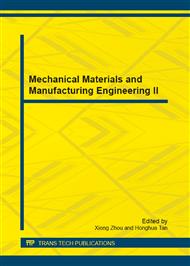p.325
p.331
p.337
p.343
p.349
p.355
p.361
p.365
p.370
Bending Deformability and Fracture Behavior of Heat-Treated 3-ply Cu/Al/Cu Clad Plates
Abstract:
The effect of heat treatment on the bending deformability and fracture behavior of roll-bonded Cu/Al/Cu clad plates were investigated. As-rolled clad plate and that annealed at 200OC exhibited the initial high load maintained for a short period and then a rapid drop of the load. The rapid softening promotes the continued localized bending once bending occurs because the work hardening due to the localized bending is negligible, leading to the localized fracture. Cu/Al/Cu clad metal annealed at 300OC, up to 450OC, initial load for bending decreased remarkably due to recovery/recrystallization, but work hardening occurred for an extended period before gradual softening took place. The initial extensive work hardening in the localized bent region tends to distribute the bending deformation uniformly, leading to the rather uniform bending. For annealed clad plates at high temperatures, the periodic cracks perpendicular to the interface were observed in the intermetallic layer and the localized slip developed both in Cu and Al emanating from the open cracks in the intermetallic layer. The localized slip marking was more evident in Cu than in Al, reflecting the lower stacking fault energy in Cu.
Info:
Periodical:
Pages:
349-354
Citation:
Online since:
December 2012
Authors:
Keywords:
Price:
Сopyright:
© 2013 Trans Tech Publications Ltd. All Rights Reserved
Share:
Citation:


